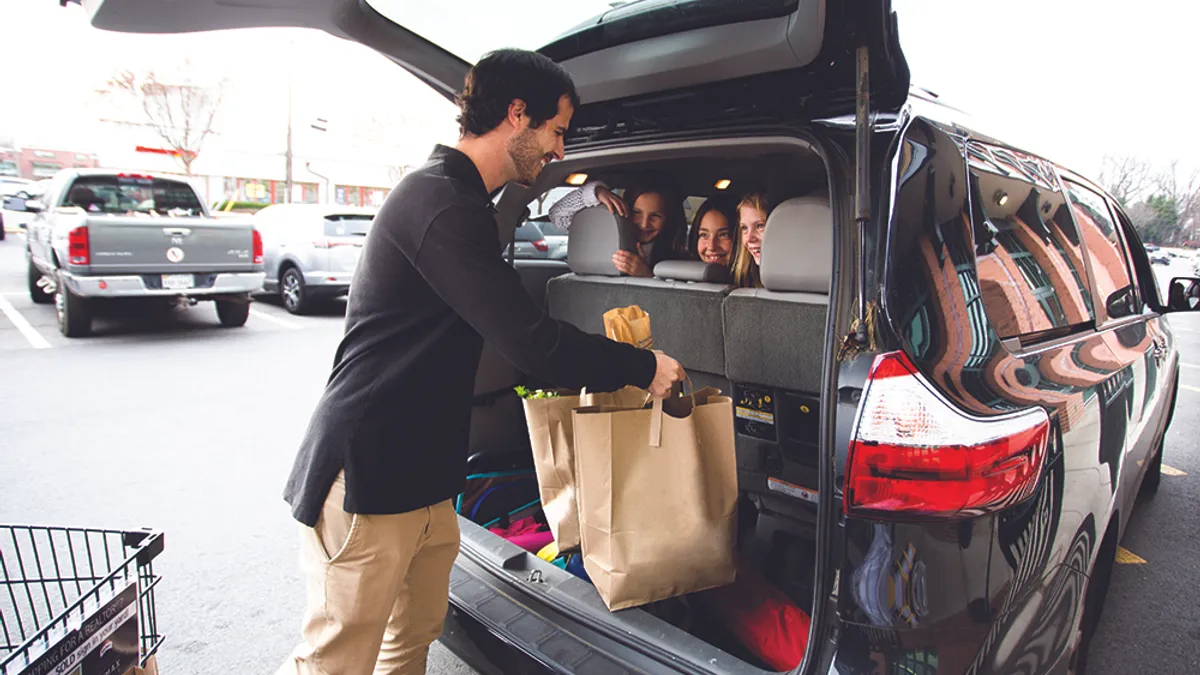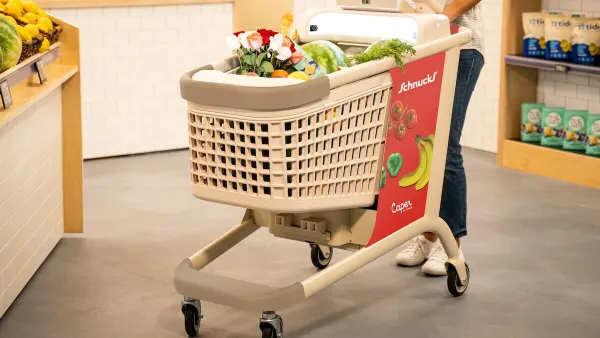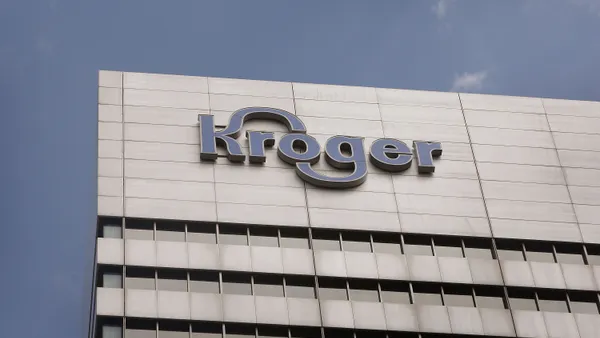Dive Brief:
- Customer satisfaction with online grocery services plunged in January even as orders for pickup and delivery rose markedly, according to data released Monday by Brick Meets Click and Mercatus. Overall satisfaction dropped 32 percentage points during the month to 56% from a record high recorded in November, with pickup leading the way down, according to a survey conducted by the firms between Jan. 28-31.
- U.S. online grocery shoppers spent $7.1 billion on orders for pickup or delivery in January, up 20% from the $5.9 billion they spent on those categories during November. More than 69.7 million U.S. households made online grocery purchases in January, with each household placing 2.8 orders on average.
- The online grocery segment remains brisk nearly a year after the onset of the coronavirus pandemic pushed unprecedented numbers of shoppers online — but retailers are struggling to maintain customer loyalty even as they scale services like store pickup.
Dive Insight:
Food retailers that have scrambled to improve their e-commerce fulfillment capabilities over the past year appear to have run into yet another headwind in the fast-growing channel: customer satisfaction.
The percentage of consumers in the survey who said they are likely to use a specific grocery e-commerce service again during the following month dropped sharply compared with the figure Brick Meets Click and Mercatus tallied when they surveyed shoppers in mid-November. At that point, the proportion of online shoppers reporting that they intended to give a particular retailer repeat business was at a record high.
The decline in the share of online grocery shoppers who say they plan to return to the same service again over the coming weeks is attributable, in part, to the increase in the share of first-time customers, which was up by 3 percentage points in January, according to the researchers. These customers, who Brick Meets Click and Mercatus define as people who placed their first order with a given service within the previous three months, have historically been less likely to go back to the same service than consumers with more experience shopping online for groceries, the researchers said in a press release.
Grocers have invested heavily in pickup service, speedier fulfillment and membership platforms to woo new shoppers and deepen loyalty among legacy customers. But companies still appear to be falling short of customer expectations for online experiences, Sylvain Perrier, president and CEO of Mercatus, said in a statement, noting that the issue could be especially challenging for grocers who serve a specific part of the country.
“To remain competitive with mass merchandisers, regional grocers need to enhance the digital shopping experience so as not to give their customers a reason to spend their money elsewhere,” Perrier said. "Grocers have to look at where they can improve operationally, how they can efficiently scale to meet online demand, and which services will be most effective at revenue protection going forward.”
The survey, which drew responses from 1,776 adult shoppers, took online grocery orders delivered via common carriers like FedEx and UPS into account along with e-commerce orders handled by grocers either themselves or through third parties like Instacart and Shipt. All told, online grocery sales hit $9.3 billion in January — the highest level reported by Brick Meets Click and Mercatus since the start of the pandemic.















